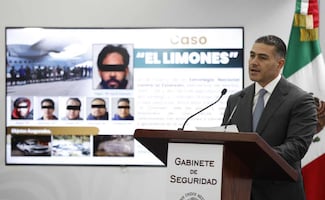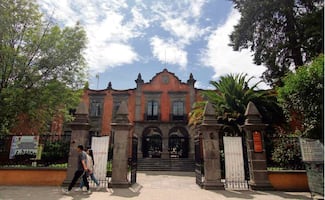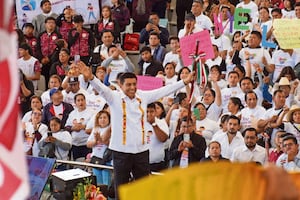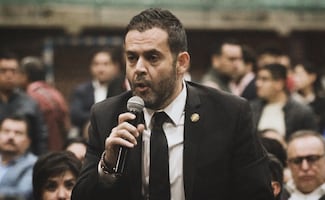Más Información

Harfuch informa avances del caso "El Limones"; UIF congela cuentas y descarta vínculos con Pedro Haces o sindicatos

Jueza cancela audiencia del caso María Amparo Casar; FGR deberá continuar acusación ante juez del Reclusorio Norte

María Amparo Casar y la presunta pensión ilícita de Pemex por la que la FGR la investiga; esto es lo que se sabe del caso
Get ready, because this will be a hard day. You will seek human remains on a hill that Los Zetas used as a clandestine cemetery with the only protection of three armed policemen from a local corporation that residents believe is infiltrated by drug cartels.
Your journey begins in Monterrey with the parents of the NGO Fuerzas Unidas por Nuestros Desaparecidos en Nuevo León (FUNDENL), who will venture into the “narcoterritory” with sticks, shovels and pickaxes because they are tired of waiting for the Army to accompany them. Today their allies are the parents of missing people in Coahuila who founded the NGO Grupo VIDA and will teach them how to find human remains in the hills surrounding Santa Catarina, the hotbed of the thugs who burned the Casino Royale and killed 52 people.
You will travel in the van of Julio Oliva, who seeks his daughter Karina, missing since January this year. He will tell you that between 2010 and 2014, people could not circulate on the road that connects to Saltillo because it was controlled by gangs. The photographer sitting next to him concurs. He will tell you that three years ago some colleagues tried to take photos of the area but they were quickly surrounded and beaten by the Zetas, who told them to convey the message that the press had nothing to do there.
The activists were told that trucks full of people go up this hill, but come back empty. Juana Solís found 116 bones that allegedly belong to her daughter Brenda Damaris on this hill. Today she came with the hope of finding more remains.
Silvia Ortiz, mother of Fanny Sánchez, leads the search. Her daughter was allegedly kidnapped by a Zeta from Coahuila known as “Chuyín”. The veteran with 11 years of experience suggests people to wear latex gloves and surgical masks, split into pairs along the hillside leaving three meters between them and walk in zigzag to cover a wider area.
If the road used by the activists sinks easily in the ground, it means there is freshly turned earth, so probably you are stepping on a clandestine grave.
Until November, 13,027 people were missing in the six northern states that share their border with the United States, almost half of the total of 26,749 people missing in Mexico.
Nuevo León is the second state with more missing people: 2,203. Tamaulipas is first with 5,519, while Michoacán has 1,017 missing people and Guerrero, 1,005.
When Monterrey lived its most violent days due to the territorial dispute between Los Zetas and the Sinaloa and Gulf cartels, police officers used to tell people that the fire seen from afar on this hill was lit by people camping, but everyone knew that the Zetas killed their rivals in pyres of tires, and even children and teenagers who refused to work for them.
“Gangs force their victims to walk and dig their own graves,” Silvia explains.
After hours of searching they find a wooden cross over some stones stacked in the middle of nowhere with a generic name on it: Antonio Alvarado. They called the experts of the Attorney General's Office but they came with no bags to work, and four agents of the Public Prosecutor's Office say they have no powers to investigate the finding. A policeman of these corporations, allegedly infiltrated by crime, says something that could be understood either as an advise or a threat: "What if you are on private property and I have to arrest you?”
To calm parents down, authorities say it might be a migrant. Hours later you will learn that in Santa Catarina, Los Zetas did not even let the family of those executed organize a funeral for their relatives, so many times they buried their children on the hill, hoping not to be the next to die.
Noticias según tus intereses
[Publicidad]
[Publicidad]











